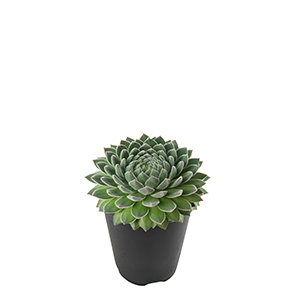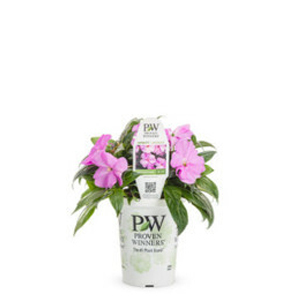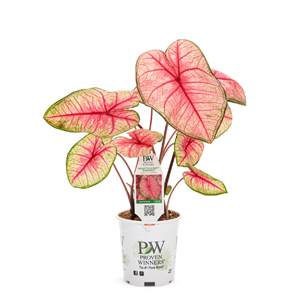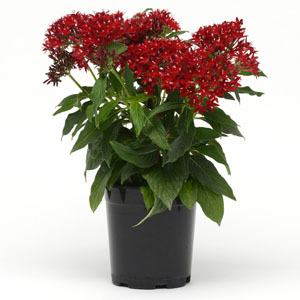
Light Needs

Mature Height

Mature Spread
Here is an oldy but goody, still a favorite heirloom indeterminate tomato that is a cross of JTD, a Campbell's Soup favorite, and Margold created in 1934. It is unequaled as a slicing tomato as well as to use in cooking. It has slightly flattened 6 ounce tomatoes with a bright red skin and good form. As an indeterminate it grows tall, and fruits all season long. This is a mid season tomato, taking about 2 ½ months to reach maturity. It exhibits an enhanced resistance to fusarium wilt, which is good news to any tomato gardener.
Heirloom tomatoes are typically open pollinated, meaning they are pollinated by the same variety of plant as they are. Crosses, or natural hybrids can occasionally occur and it can be interesting to see what the offspring from that cross, when planted by seed, brings to you in attributes and form. Sometimes famous varieties are made by accidental cross pollinations. The term ‘heirloom’ refers to a variety that grows true to seed and that is at least 50 years old. Rutgers Tomato remains a favorite to this day.
Rutgers Tomato Plant Care
Plant Rutgers indoors in soilless seed starting mix about 8 weeks before your area’s last frost date. Cover with ¼ inch of mix. They will germinate in about 7 to 14 days. Once they sprout, place a fluorescent or LED light about 4 inches from the seedlings, moving it up as they grow. Water regularly by misting or bottom watering, but avoid having plants sit in soggy mix. Harden off by moving outdoors little by little, giving them more sun each time until they can tolerate full sun. Plant in the garden when all danger of frost has passed and soil temperatures are above 65 degrees.
Growing Rutgers Tomato Plants
Once incorporated into your garden bed, mulch around them with a good quality mulch to help retain soil moisture. Tomatoes are heavy water users and must be kept consistently moist for best results. Do not let them dry to the point of wilting. Keep weeds down to minimize competition for soil nutrition. Water and feed frequently during the active growing season. Provide support for these indeterminate growers that can reach impressive heights and fruit over a long season. Use of tomato cages, trellises or stakes will help support the stalk and foliage and provide support for the fruit. Clip suckers (unproductive branches) along the first 8 inches of the stalk to help reduce any soil borne fungus or bacteria diseases from reaching the lower leaves.
Tomatoes make excellent container plants, giving even the smallest area gardeners a chance to enjoy their fresh fruits. Choose a container with drainage holes, and provide a tray with rocks in it to put the container on if you need to protect a finished surface. Do not let the container sit in a tray of water and be allowed to stay soggy as you will rot the roots of your plant. Select a large enough container that can resist tipping over when loaded with fruit, and will allow you to provide some support for the vine to grow on. Rutgers can grow to over 10 feet tall, and will spread 34 to 54 inches wide. Raised beds work well for gardeners with poor draining native soil.
Watering Rutgers Tomatoes
Water daily until your plants are established in the ground or their containers. Water frequently if planted in containers as these dry out faster than in ground plants will. Consider watering by irrigation if planted in a large garden area, or by a soaker hose in a smaller area to avoid splashing the foliage and giving rise to soil borne diseases.
Feeding Rutgers Tomato Plants
Fertilize your tomatoes about 3 weeks after planting in the ground with an organic tomato food. Alternatively, natural gardeners can apply a well rotted compost or make a compost tea to provide tomatoes with valuable nutrients that they can then use to produce fruit. If you notice blossom end rot beginning on your fruit, apply a soil amendment that is meant to add calcium to your soil to alleviate this problem. Fertilize every other week or as needed during the active growing season. If the weather gets hot and your plant slows fruit and flower production, cease fertilizing until cool weather arrives and your plant resumes its growth and production.
Rutgers Tomato Plant Information
| Common Name: Rutgers Tomato |
| Botanical Name: Solanum lycopersicum |
| Plant Type: Tomato – Heirloom Slicer |
| Edible Type: Vegetable |
| Fruit Size: 7 oz |
| Light Exposure: Full Sun (+6 hrs.) |
| Spacing: 24 - 36" (61 - 91cm) |
| Height: 48 - 60" (122 - 152cm) |
| Width: 24 - 36" (61 - 91cm) |
| Brand: BURPEE® |
| Tomato Type: Heirloom Tomato |
- SKU:
- TOMRUP
Please Note: The pictures below are to give a general representation of the different container sizes. The actual size/ages of plants are estimates and will vary based on type of plant, time of year, last pruning & many other factors.

Also Known As:
3.5" Container
Plant Age:
~ 6 months
Plant Size:
~ 3"-6"
Pot Size:
~ 4.5"H x 3.75"W
Volume:
~1.42 quarts

Also Known As:
4.25" Container
Plant Age:
~ 6 months
Plant Size:
~ 3"-6"
Pot Size:
~ 4.93"H x 4.25"W
Volume:
~1.56 pints

Also Known As:
Quart
Plant Age:
~ 6 months - 1 year
Plant Size:
~ 4"-8"
Pot Size:
~ 4.75"H x 4.5"W
Volume:
~1.50 quarts

Also Known As:
#1 Container
1 Gallon
Plant Age:
~ 1 - 2 years old
Plant Size:
~ 10"-14"
Pot Size:
~ 7"H x 7.75"W
Volume:
~2.26-3.73 quarts

We stand behind our plants with industry-leading guarantees to give you peace of mind.
We want your plants to arrive in great condition! If you notice any issues upon delivery, contact us within 3 days.
All annuals, houseplants & vegetables, we provide a 30-day warranty to ensure that your plants thrive.

Pre-ordered plants are scheduled to ship in Spring 2026. We carefully plan our shipping dates based on your USDA Plant Hardiness Zone to ensure optimal planting conditions upon arrival. Want it sooner/later? Reach out, and we'll try our best to accommodate.
Estimated ship week for pre-ordered plants will ship based on growing zones as shown below.
| Growing Zone | Estimated Ship Week |
|---|---|
| Zone 10 | March 30th |
| Zone 9 | March 30th |
| Zone 8 | April 6th |
| Zone 7 | April 13th |
| Zone 6b | April 20st |
| Zone 6a | April 27th |
| Zone 5b | May 4th |
| Zone 5a | May 11th |
| Zone 4 | May 18th |
| Zone 3 | May 25th |
Note: These are only estimated ship dates. Plants may ship out later depending on weather & growing conditions of the plant.
Note: Only plants indicated as pre-order will ship as shown above. All other plants and hard goods will ship as normal.
Plants that are currently in stock typically ship within 2-7 business days after your order is placed.
Plant Addicts ships to the lower 48 states within the U.S. Unfortunately, we do not currently ship to Alaska, Hawaii, or internationally.
This plant cannot be shipped to the following states: Idaho, Nevada, AK, HI. These restrictions apply only to this specific plant due to agricultural regulations or other limitations. Other plants may still be available for shipping to these states.
If you have any questions about shipping restrictions, feel free to reach out to our team!



